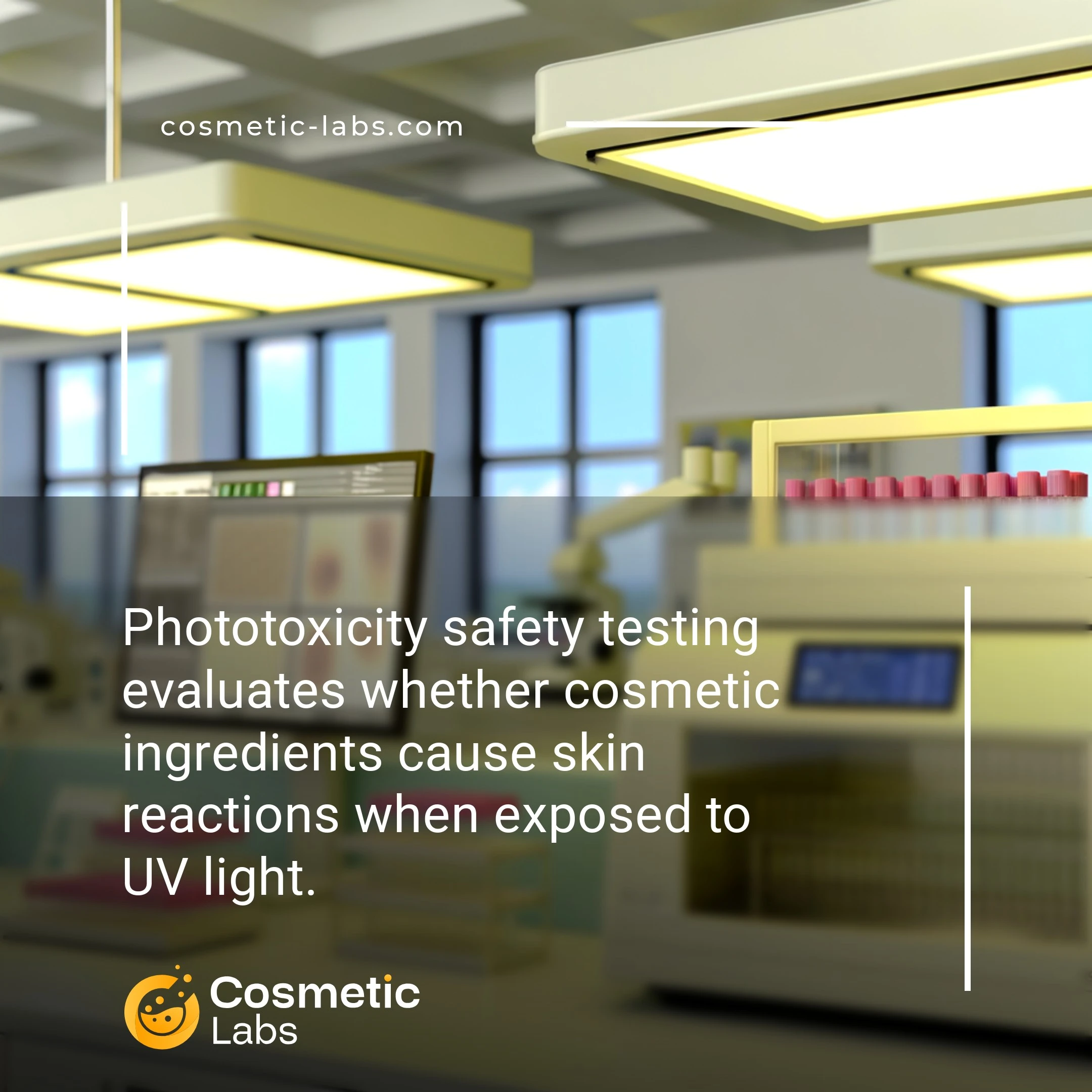Phototoxicity Testing Services for Cosmetic Products

What is Phototoxicity safety testing?
Phototoxicity safety testing services evaluate how cosmetic ingredients and finished products react when exposed to UV light on skin. Labs use standardized protocols like the 3T3 NRU phototoxicity test to identify ingredients that become toxic under sunlight exposure, helping brands avoid light-induced skin reactions before market launch. This testing is particularly important for products containing citrus oils, retinoids, or alpha hydroxy acids that can increase photosensitivity.
Why do you need this service?
Cosmetic labs on our platform conduct phototoxicity testing for sun care formulations containing UV filters, essential oils, and botanical extracts before market launch. Teams also request these assessments when reformulating existing products with new photosensitizing ingredients like citrus oils or retinoids, ensuring regulatory compliance across global markets while preventing consumer skin reactions from light exposure.
Who provides Phototoxicity safety testing services?
All cosmetic labs providing Phototoxicity safety testing services
There is no company providing these services at the moment.
Phototoxicity Safety Testing Services
Phototoxicity safety testing protects your cosmetic products from causing skin reactions when exposed to light. This testing forms a critical component of clinical safety assessments, helping brands identify potential photosensitizing ingredients before market launch.
Light-Induced Skin Reaction Testing
Labs use standardized protocols to test how your formulations react under UV and visible light exposure. The 3T3 NRU phototoxicity test measures cell viability after light activation, providing quantitative data on potential skin damage.
Testing typically includes:
- UV-A irradiation at 365nm wavelength
- Cell viability measurements at 24-48 hour intervals
- Dose-response curve analysis
- Comparative controls with known phototoxic substances
Results help you reformulate products containing photosensitive ingredients like certain essential oils, retinoids, or chemical sunscreen actives.
Regulatory Compliance and Documentation
Professional labs deliver testing reports that meet FDA, EU, and international regulatory standards. These documents support your product safety dossier and help streamline approval processes across different markets.
Standard deliverables include:
- GLP-compliant test protocols and raw data
- Statistical analysis with confidence intervals
- Photosafety risk assessment conclusions
- Recommendations for product labeling requirements
Connect with experienced labs on our platform to discuss your specific photosafety testing needs and timeline requirements for your product development schedule.
Practical Applications of Phototoxicity Safety Testing
Brands use phototoxicity safety testing applications to validate product safety before market launch and protect consumers from UV-induced skin reactions.
Sunscreen and UV Protection Product Development
Labs conduct 3T3 NRU phototoxicity tests on sunscreen formulations containing chemical filters like avobenzone, octinoxate, and zinc oxide. This testing identifies potential photosensitizing reactions within 48-72 hours using standardized UV-A exposure protocols. Teams evaluate both leave-on and rinse-off formulations to determine safe usage concentrations.
The results guide reformulation decisions and support SPF claims with safety data. Brands receive detailed reports showing phototoxic potential scores and recommended maximum use levels for each active ingredient combination.
Color Cosmetics and Fragrance Safety Validation
Cosmetic labs test lipsticks, foundations, and perfumes containing photosensitive compounds like bergamot oil, citrus extracts, and synthetic dyes. The testing process uses in vitro cell cultures exposed to simulated sunlight conditions to predict skin reactions. Labs screen individual ingredients and finished formulations within 5-7 business days.
This validation prevents costly recalls and regulatory issues. Brands use the data to create consumer warnings, adjust formulations, or remove problematic ingredients before production scales up.
| Product Category | Common Phototoxic Ingredients | Testing Duration | Regulatory Requirement |
|---|---|---|---|
| Sunscreens | Chemical UV filters, preservatives | 48-72 hours | FDA recommended |
| Fragrances | Bergamot, lime, lemon oils | 5-7 days | IFRA guidelines |
| Anti-aging serums | Retinoids, AHA/BHA acids | 3-5 days | EU mandatory |
| Hair care | Coal tar derivatives, dyes | 48 hours | Market-specific |
Partner with experienced cosmetic labs on our platform to access validated phototoxicity testing protocols that meet global regulatory standards and accelerate your product development timeline.
